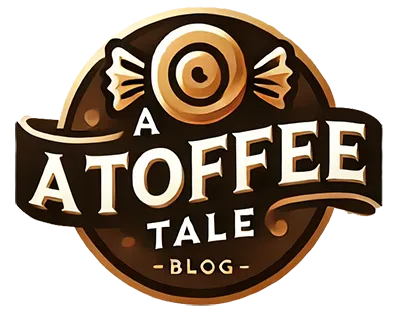Bulking Up Your Muscular Pitbull: 5 Proven Techniques

Muscular Pitbull have an intimidating appearance, owing to their muscular build. This not only showcases the breed’s physical capabilities but also reflects the owner’s ability to maintain their overall health. However, building your Pitbull’s muscles requires more than just physical exercise. You need to adopt a holistic approach, which includes an effective workout and diet routine.
There are various ways to achieve this, but it’s crucial not to overdo it. It’s essential to strike a balance between exercise and rest and to provide your Pitbull with a nutritious diet that caters to their specific needs.
If you’re looking for a helpful guide to help you achieve your goal of making your Pitbull more muscular, you’ve come to the right place. This article will provide you with valuable insights and tips to make your mission a success story. Here is an easy guide to getting a muscular pitbull in no time.
Unpacking the Muscular Build of Pitbulls-Muscular Pitbull
Muscular Pitbull- Have you ever wondered why Pitbulls are so muscular? Well, it turns out that Pitbulls are naturally built to be more muscular than other breeds, thanks to their lineage of bulldogs and terriers. These breeds are known for their solid and stocky build, and these traits have been passed down to the Pitbull breed.
Out of all the Pitbull breeds, the American Pit Bull Terrier is considered the most muscular. These dogs have a powerful and sturdy appearance that showcases their strength and power, particularly in the well-defined muscles of their shoulder blades and forelegs.
Unfortunately, in the past, some breeders and owners exploited the Pitbull’s athletic abilities by subjecting them to barbaric dog fights and bull baiting. However, these cruel practices are now banned, and Pitbulls are no longer used for such inhumane activities. Instead, their impressive strength and power are harnessed in activities like dock jumping and weight pulling, which allow them to showcase their abilities safely and enjoyably.
Next read: Top 10 American Pitbulls Breeders | Find Pitbull Puppies For Sale

Effective Methods to Increase Muscle Mass in Your Pitbull
If you’re looking to make your Pitbull more muscular, you’re in the right place. This guide provides you with a comprehensive rundown of all the ways you can help your furry friend bulk up. However, it’s crucial to remember that every Pitbull is unique, especially when it comes to their anatomy. Thus, it’s best to proceed with caution and consult with your veterinarian before trying any of these methods.
Muscular Pitbull- Without further ado, here are five proven ways to increase your Pitbull’s muscle mass:
Step 1: Feeding Your Pitbull a Muscle-Building Diet
The first and foremost step in building your Pitbull’s muscles is to provide them with the right nutrients. Whether your furry friend is underweight or overweight, a balanced diet that promotes muscle development should be your goal. The food your dog eats plays a crucial role in building muscle mass.
Muscular Pitbull- Although store-bought dog food can keep your Pitbull’s hunger pangs at bay, it often lacks the necessary nutritional value. To make your dog more lean and muscular, you must introduce a muscle-building diet consisting of a well-proportioned meal containing essential protein, carbs, and fats.
Let’s dive into how each of these nutrients contributes to building muscle in Pitbulls:
Protein: Your Pitbull’s diet should consist of at least 40% protein, as this compound not only builds muscle but also strengthens the immune system. Meals consisting of boiled chicken, pork, beef, or fish are excellent sources of protein that should be included in every meal.
Carbohydrates: Carbs are the primary energy source for your dog. Their daily diet should include around 40% carbs to promote the development of brain and body cells. Foods such as brown rice, whole wheat, corn, and potato are rich in carbohydrates.
Fat: Lastly, your Pitbull’s meal plan should consist of 20% fat to fuel the muscles and provide enough capacity to perform. Raw eggs are an excellent source of fat that should be included in each meal.
An ideal meal plan consists of six small meals a day to encourage an anabolic muscle-building state. To achieve this, stick to a scheduled feeding routine every day. Remember, every Pitbull’s anatomy is unique, so consult your veterinarian to ensure your dog gets a diet that’s best for them.
Step 2: Incorporate Exercise into Your Pitbull’s Routine for More Muscles
Muscular Pitbull- Providing your Pitbull with a nutrient-rich diet is just one part of the process in building muscle. Exercise is another crucial component that shouldn’t be overlooked. Starting with simple routines like walking and running can go a long way. Once your Pitbull gets used to these routines, you can gradually introduce more intense activities like weight pulling, tugging on spring poles, and running uphill. Including weight sleds and weight vests can also aid in maximum muscle workout. However, it’s important to consider your dog’s enjoyment to prevent boredom.
When exercising, your Pitbull’s muscles will tear apart. Although it sounds alarming, this is a necessary process to allow for the repair and rebuild process, which leads to muscle gain. Therefore, it’s crucial to start the diet plan before introducing intense exercises.
Step 3: Focus on High-Intensity Cardio Training for Your Pitbull
Muscular Pitbull-Once your Pitbull becomes comfortable with exercise, it’s time to level up with some cardio training. Since cardio activities are more intense, they should be done in short periods, preferably 10 to 15 minutes a day. High-intensity cardio exercises include sprinting or running up bleachers or hills. Depending on your vet’s recommendation, you can also add a weight vest to increase the intensity of the workout. However, it’s important not to push your dog’s limits to avoid causing harm.
Step 4: Give Your Pitbull Dietary Supplements for Optimum Muscle Growth
Due to the intense exercise and muscle workout, your Pitbull may lose or have lower levels of necessary body nutrients. Therefore, in addition to providing the recommended amount of food, you should add dietary supplements to their daily meals. Vitamin supplements, as well as protein, omega, and antioxidants, help repair and build muscles. Omega fatty acids, in particular, reduce muscle pain and swelling, allowing your dog to stay active. However, keep in mind that dietary supplements only aid or support muscle growth and do not guarantee it.
Step 5: Incorporate Weight Training Exercises
Muscular Pitbull- The final step to making your Pitbull more muscular is to include weight training exercises in their routine, in addition to cardio activities. These exercises can include playing tug of war using a spring pole and playing weighted fetch. However, it is crucial to be aware of your dog’s weight range and how much weight they can tolerate.
Tug of war is a classic game that can significantly help build muscle. It encourages the stretching and tearing of muscles. You can also use a spring pole to let your Pitbull play on their own. Remember that not only the body and leg muscles need to be targeted in your routine. To strengthen the neck and back muscles, try playing fetch with a weighted object such as a one-liter water bottle, a small tire, or a light dumbbell. The weight of the object should be appropriate for your dog’s weight to avoid injury.
5 Key Influences That Impact Your Pitbull’s Weight and Body Composition
Muscular Pitbull- If you’re planning to build your Pitbull’s muscles, it’s crucial to consider certain factors that can affect their weight. Understanding these factors can help you develop an effective workout and diet plan that’s tailored to your dog’s needs.
Genetics
Just like humans, a Pitbull’s body composition and weight are influenced by their genetics. Research suggests that obesity in some dog breeds can be attributed to inherited genes. This explains why each dog has a unique size and build, and why some Pitbulls may naturally have a slimmer or bulkier physique.
It’s essential to keep in mind that you shouldn’t push your Pitbull to gain more muscles if their genetics don’t support it. Focus on helping them achieve their ideal weight and physique, rather than trying to force a particular look.
Poor Nutrition
A Pitbull’s weight is directly affected by the quantity and quality of their food intake. To help your Pitbull achieve their ideal weight, their diet should include a balance of proteins, carbohydrates, and healthy fats. This is especially important during their puppy stage, as proper nutrition can set the foundation for healthy growth and development.
However, it’s also crucial to avoid overfeeding your Pitbull, as excessive treats or food can lead to obesity and other health issues.
Lack of Exercise
Without proper exercise and movement, your Pitbull is at risk of gaining extra weight. Starting them off with daily walks as puppies can establish a healthy exercise routine that can be built upon as they grow older.
Remember that an effective workout routine, paired with a proper diet, is key to maintaining a muscular and healthy Pitbull.
Stress and Health Conditions
Stress and underlying health conditions can also affect your Pitbull’s weight. If they’re under stress or depressed, they may lose weight and appear less muscular. Common causes of depression in dogs include neglect, separation anxiety, and changes in their environment.
Additionally, illnesses such as diabetes, dental problems, liver diseases, and cancer can cause sudden weight loss and loss of appetite in your Pitbull.
Parasitic Infection
Parasitic infections such as roundworms and hookworms can enter your Pitbull’s system and consume the nutrients and minerals they need to gain weight. This can lead to weight loss and other complications.
If you notice any symptoms of parasitic infection, such as diarrhea, vomiting, or loss of appetite, seek immediate treatment from your veterinarian.
In conclusion, understanding the factors that affect your Pitbull’s weight is crucial in developing an effective muscle-building plan. By providing them with proper nutrition, exercise, and healthcare, you can help your Pitbull achieve their ideal weight and physique while keeping them healthy and happy.
In conclusion, maintaining a healthy weight for your Pitbull is crucial to their overall well-being. While genetics plays a role in determining their body composition, proper nutrition, exercise, and regular check-ups with a veterinarian can help ensure that your Pitbull stays at a healthy weight. Additionally, being aware of potential stressors, underlying illnesses, and parasitic infections can help you address any issues that may arise and prevent your dog from experiencing unnecessary weight fluctuations. By taking a proactive approach to your Pitbull’s health, you can help them live a long, happy, and healthy life.




